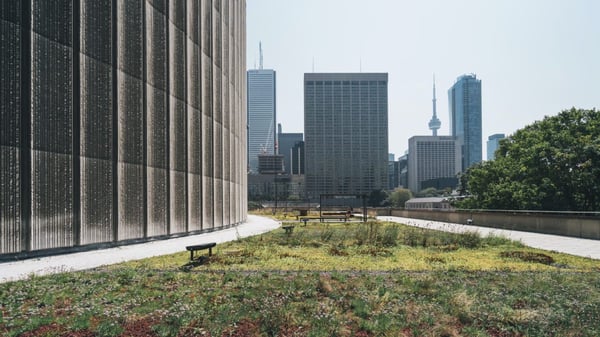As the Earth’s population grows and people use its finite resources, the push for eco-friendly processes and procedures has come to the forefront of everyone’s minds. Business leaders, governments and regulating bodies have all created rules, passed bills and made it known that being environmentally friendly will garner you more business and a solid reputation. In the construction industry, that means green building, recycling/reusing/repurposing materials and sustainability. Sustainable construction is a hot button topic in the industry worldwide, and it’s not as complicated as you might thing.
According to eSub.com, “Sustainability is avoiding the depletion of natural resources to maintain the ecological balance, and that’s what most businesses and industries mean when they talk about sustainability.” When it comes to construction, there are a variety of ways to avoid depleting the Earth’s natural resources. From using steel dust created during manufacturing to make a new material for structural purposes to implementing smart technology, sustainable construction is not going anywhere.
ForConstructionPros.com lists five key techniques which have the greatest impact on sustainable construction: 1. Prefabricating Materials in Controlled Environments, 2. Construction Waste Management, 3. Managing the Site for Improved Environment, 4. Lean Manufacturing to Reduce Energy, and 5. Material Selection.
Prefabrication of materials in a controlled environment reduces waste and allows for more precise cutting. The controlled environment allows metal cutting for duct work to create less waste because the metal doesn’t change due to weather conditions. This results in lower costs for labor and materials.
Construction waste management has become easier for builders. It used to be that several containers would be placed at a job site for different materials. But haulers have become more sophisticated and now use pickers to separate materials, so there is only one bin at a job site. This reduces costs, reduces the job site footprint with less space utilized, and allows for materials to be recycled. Some materials can be recycled on site, like concrete which can be crushed and used for foundations.
Managing the site for improved environment speaks for itself. Stormwater pollution prevention is a big deal. Cities and towns don’t want builders who dump toxic chemicals into their sewer systems, so runoff should be contained. Workers at the job site must adhere to strict rules, like no smoking on the site and bringing recycling containers for food to decrease organic waste. Keeping the environment healthy and reducing the carbon footprint is key here.
Lean manufacturing to reduce energy also speaks for itself. Not all forms of energy are renewable or reusable, so when that is the case, reducing that use is the next best thing. An example would be having materials delivered on the day they are needed. This eliminates materials sitting around, materials that could also be stolen which would lead to increased costs on the project. It also reduces the chances of damage to the materials and saves time.
Material selection is one of the biggest factors in sustainable construction. Choosing materials that are not only considered green or eco-friendly, but also those which will last a long time and not infringe on the local environment is a big deal. Using recycled materials, natural materials like wood, bamboo and natural fibers all fall under green building. They also last a long time and reduce a project’s carbon footprint.
One further addition to this list would be Building Information Modeling technology. Utilizing this software assists with sustainability because it allows you to see problems during the design process, well before building starts. The technology can show you where conflicts may lie, where improvements can be made and also offers transparency for all parties involved as it shows changes in real-time. Everyone is on the same page, delays are minimal, costs are kept down because estimates are on-target and profits are greater.
Sustainable construction is what governments and municipalities worldwide are want to see. It is eco-friendly, increasing the life of our planet. It reduces costs which results in increased profits. And it makes everyone involved in the project feel good at the end of the day because they completed their task while minimizing the environmental impact.

Recent Posts
- Spec Home Loans: Complete Guide to Construction Financing for Builders
- Spec Construction Loans: A Spec Line of Credit Is Worth the Paperwork
- Spec Homes and Pre-Sale Homes: Relative Benefits for a Spec Builder
- Spec Construction Success: Insights for the Investor Builder
- How Is a Spec House Different From Other Kinds of House Construction?
